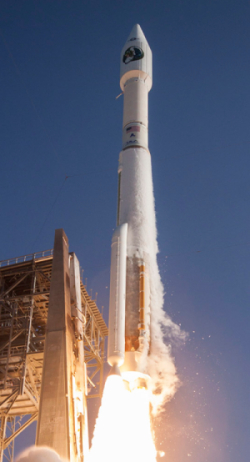SpaceX to up its purchase of carbon fiber?
The competition heats up: A Japanese supplier of carbon fiber materials has announced that it and SpaceX are negotiating a multi-year deal worth possibly as much as $3 billion.
The multiyear deal with Tesla founder Elon Musk’s 14-year-old venture is estimated to be worth 200 billion yen to 300 billion yen ($1.99 billion to $2.98 billion) in total. The two sides are aiming to finalize the agreement this fall after hammering out prices, time frames and other terms. SpaceX aims to hold down expenses by re-using rockets and spacecraft. Originally, the company made rockets mostly out of aluminum to keep costs low, using carbon fiber only for a few parts, such as connecting joints.
The U.S. company said in a statement, “Toray is one of a number of suppliers we work with to meet our carbon fiber needs for Falcon rocket and Dragon spacecraft production, and we haven’t announced any new agreements at this time. As our business continues to grow, the amount of carbon fiber we use may continue to grow.”[emphasis mine]
The deal is not yet final, but the highlighted language above suggests to me that, based on SpaceX’s engineering tests of its recovered first stages, it has decided it is worthwhile replacing aluminum with carbon fiber for many more of its rocket parts. The fiber might cost more, but if the first stage is going to be reused, the cost can be distributed over several launches. And because carbon fiber is lighter than aluminum, it will allow their rockets to launch a larger payload.
The competition heats up: A Japanese supplier of carbon fiber materials has announced that it and SpaceX are negotiating a multi-year deal worth possibly as much as $3 billion.
The multiyear deal with Tesla founder Elon Musk’s 14-year-old venture is estimated to be worth 200 billion yen to 300 billion yen ($1.99 billion to $2.98 billion) in total. The two sides are aiming to finalize the agreement this fall after hammering out prices, time frames and other terms. SpaceX aims to hold down expenses by re-using rockets and spacecraft. Originally, the company made rockets mostly out of aluminum to keep costs low, using carbon fiber only for a few parts, such as connecting joints.
The U.S. company said in a statement, “Toray is one of a number of suppliers we work with to meet our carbon fiber needs for Falcon rocket and Dragon spacecraft production, and we haven’t announced any new agreements at this time. As our business continues to grow, the amount of carbon fiber we use may continue to grow.”[emphasis mine]
The deal is not yet final, but the highlighted language above suggests to me that, based on SpaceX’s engineering tests of its recovered first stages, it has decided it is worthwhile replacing aluminum with carbon fiber for many more of its rocket parts. The fiber might cost more, but if the first stage is going to be reused, the cost can be distributed over several launches. And because carbon fiber is lighter than aluminum, it will allow their rockets to launch a larger payload.

